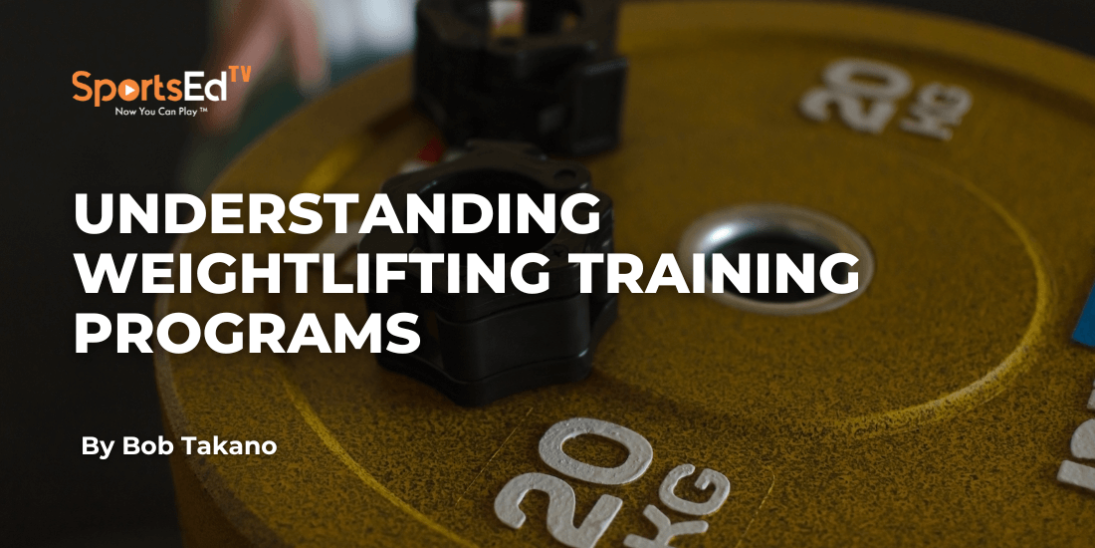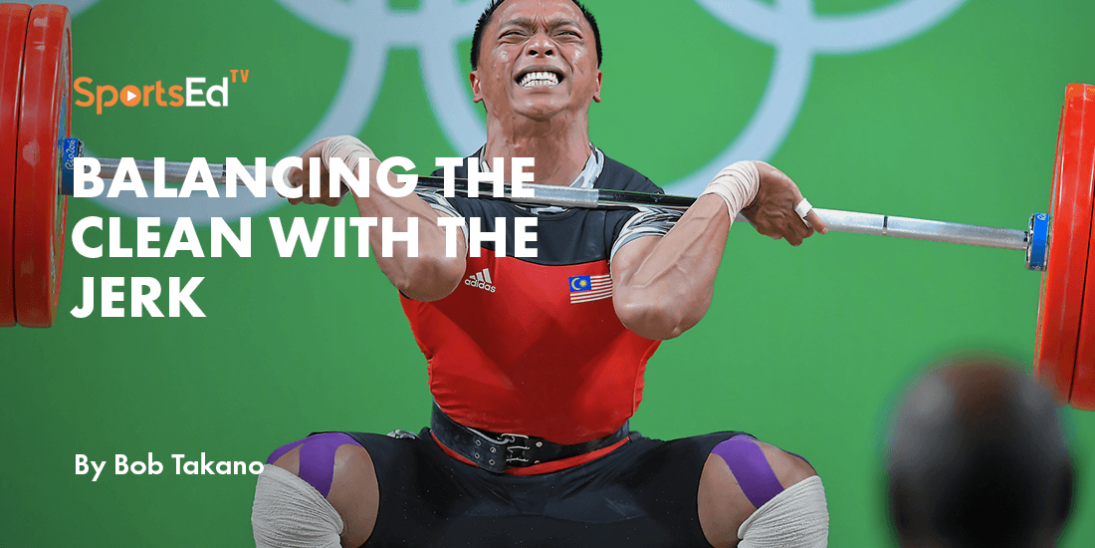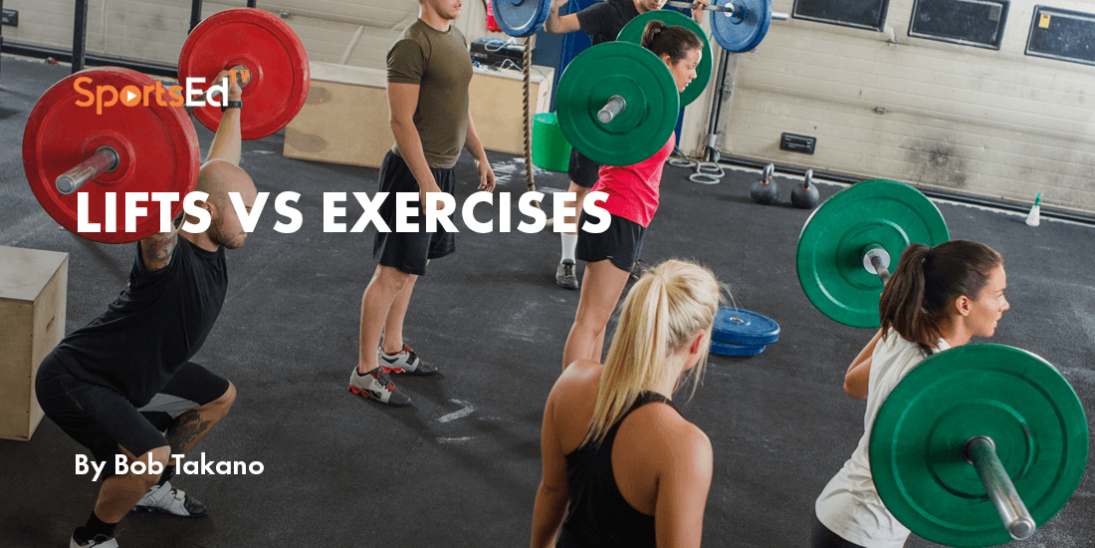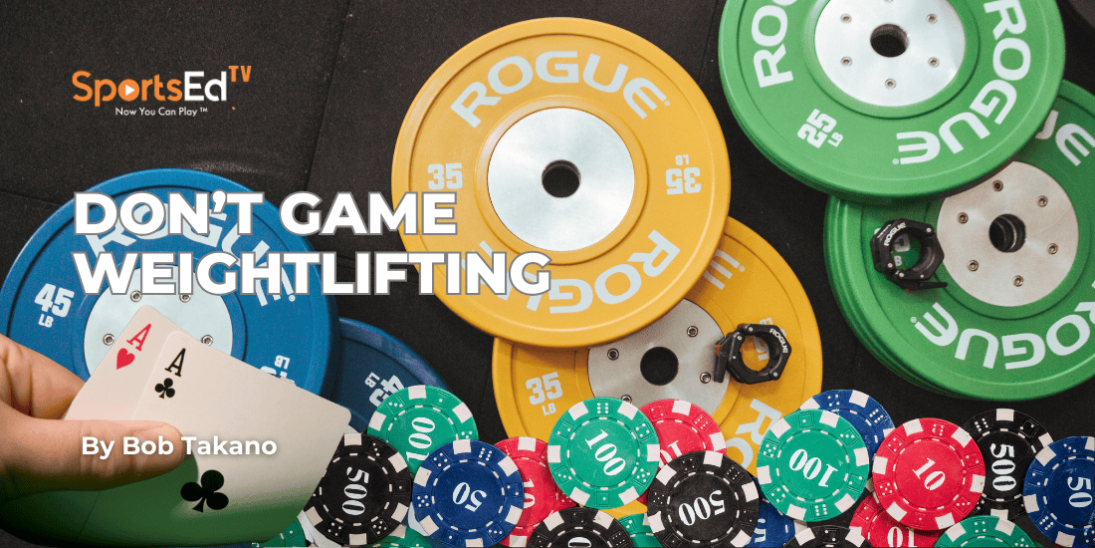Weightlifting
Welcome and thanks for visiting...

Weightlifting Classification System and Annual Volume
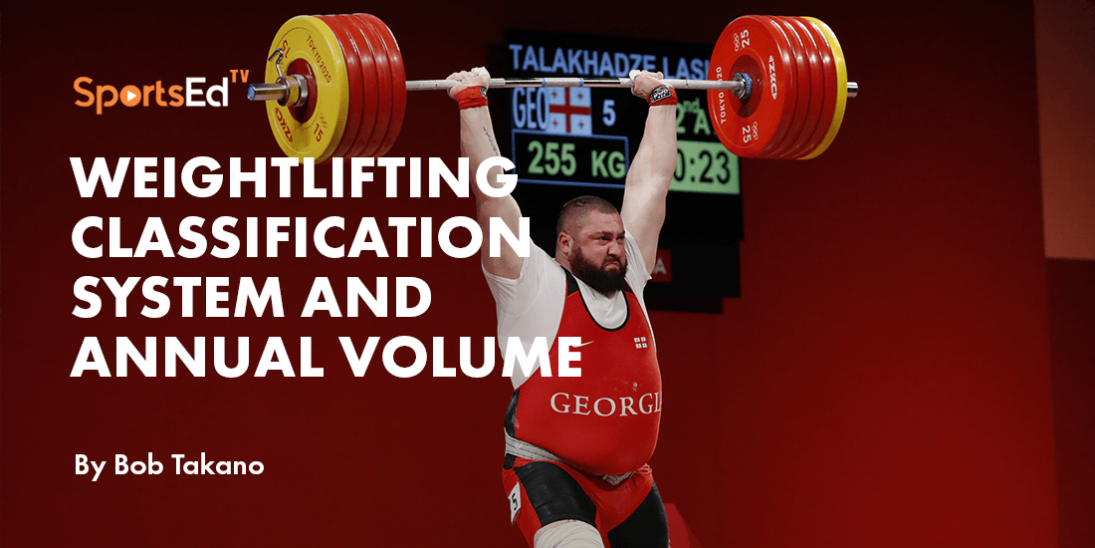
This article is being written as an update for my book Weightlifting Programming which is now 11 years old. However, since the human body has not evolved much in the intervening time span, it should be of value. Furthermore, there is not a lot of good research on training methods that have been done in the meantime, so this information should still be of value as far as providing direction for coaches.
The basis of this information is rooted in the classification system originally developed by the Soviets and copied by several other national governing bodies. It classifies lifters by the two lifts totals they’ve achieved in competition. The classes are as follows:
- Class 3
- Class 2
- Class 1
- Candidate for Master of Sport (CMS)
- Master of Sport (MS)
- International Master of Sport (IMS)
Classification System
The weightlifting classification system has six levels: Class 3, Class 2, Class 1, Candidate for Master of Sport (CMS), Master of Sport (MS), and International Master of Sport (IMS). The first three classes are for local or regional competitors, while the Master of Sport categories are for talented athletes working toward becoming international competitors.
The system was developed for weightlifters in the 16 to 35-year age range.
Masters lifters (and I know that many of them) should not feel ignored as there has been relatively little research on this population. Thus, it would be difficult to come up with meaningful numbers.
In 2018, the bodyweight categories changed, and the totals for each bodyweight class were unavailable. Therefore, I ran into trouble calculating some numbers to help with my programming. I believe they are workable.
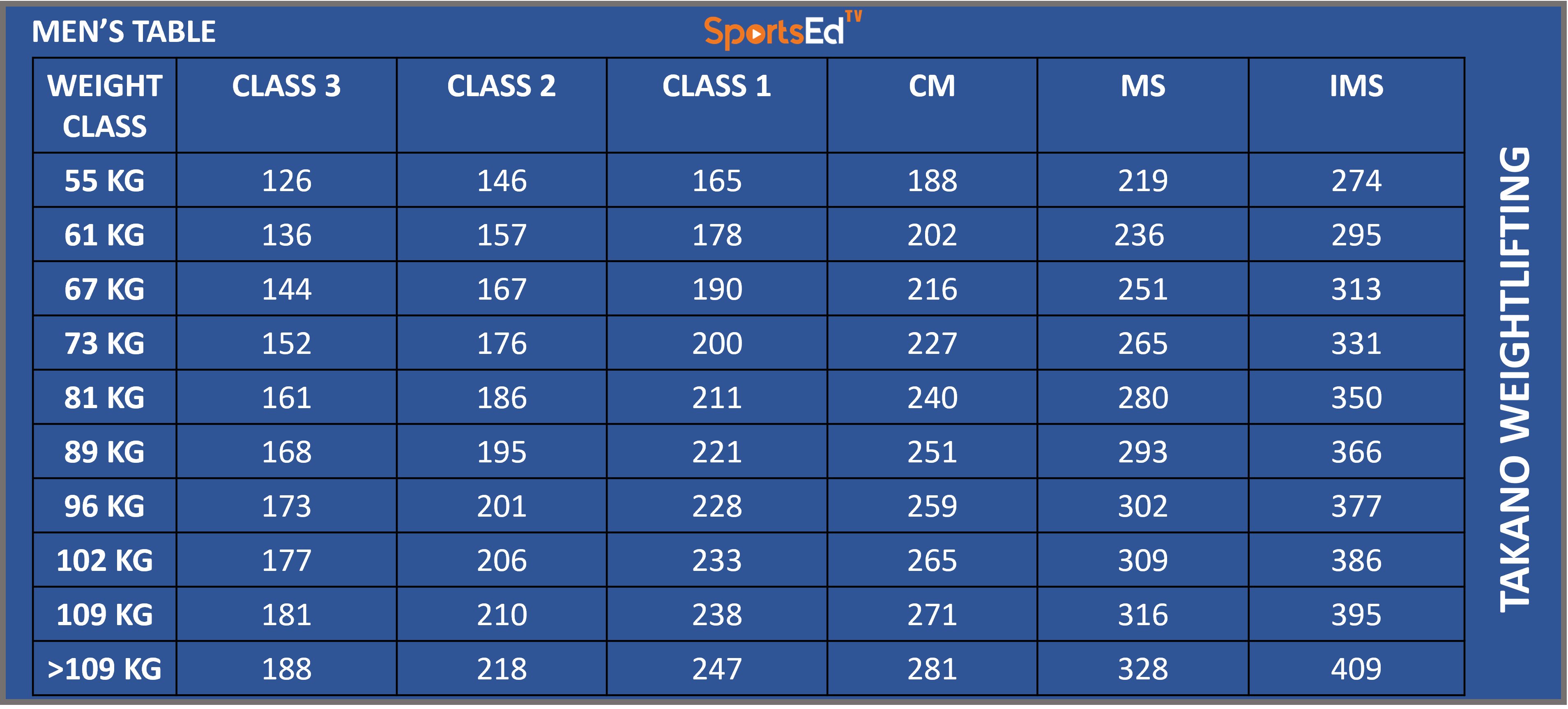
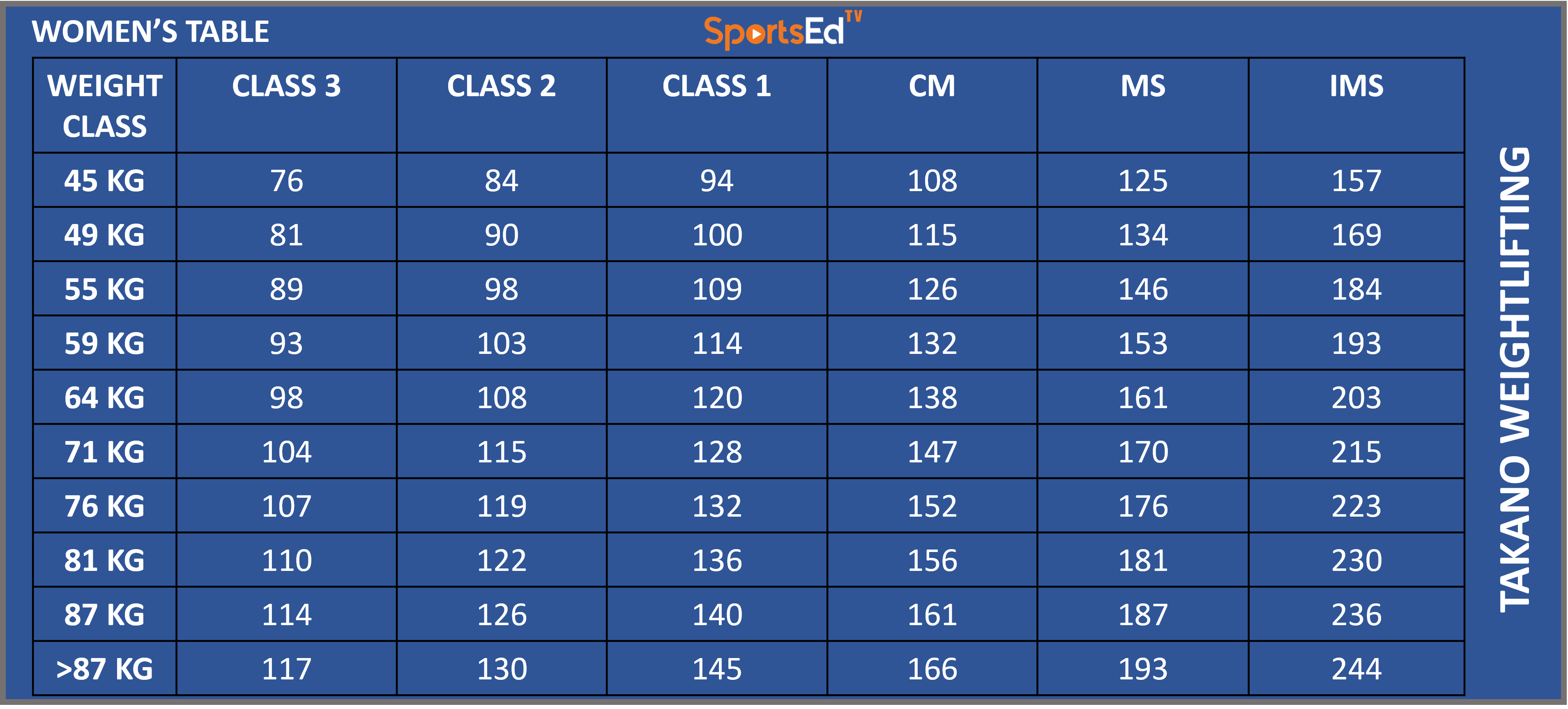
Annual Volume
Once the athlete’s classification is determined, the following table can be used in the programming planning.
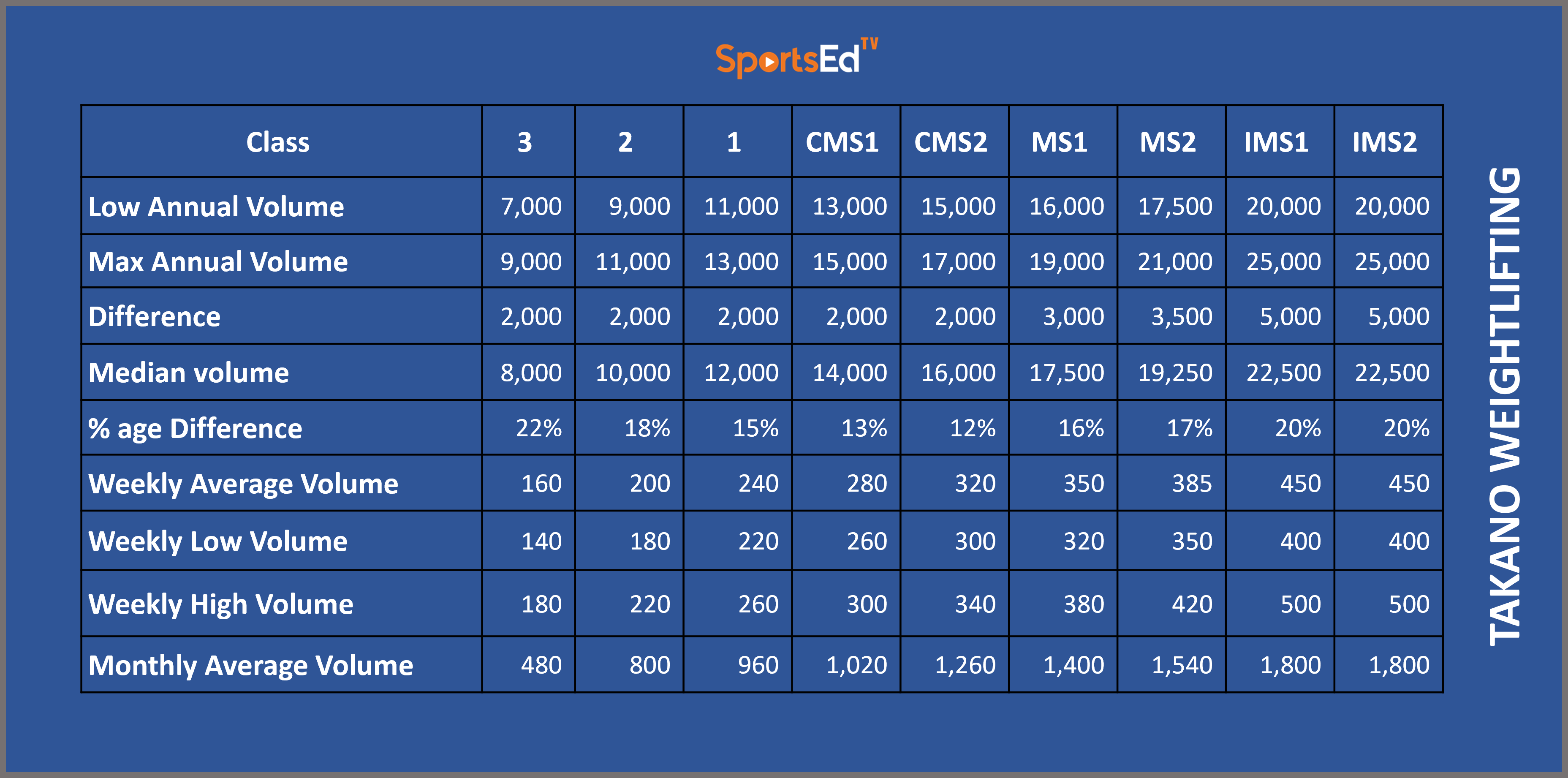
The top two rows display the minimum and maximum number of repetitions per year at 60 % and above of the fundamental exercises (classic lifts, power snatches, power cleans, jerking movements, pulls, squats, and deadlifts).
The third row is the range of reps.
The fourth row is the halfway figure between the first two rows.
The % age difference is the difference divided by the max annual volume expressed as a percentage.
The weekly average volume is the average number of repetitions per week.
The weekly low volume and the weekly high volume express the range.
The monthly average volume is the average number of repetitions per month.
What is most valuable about this article is the trends that are expressed. Use them to guide your programming.
FOR MORE HELPFUL INFORMATION
For those searching for the most credible training information based on fifty years of coaching experience, the Takano Weightlifting Coaching Membership is a vast collection of videos and written content touching upon a complete approach to coaching weightlifting. Coaches of beginners and elite athletes will be able to discover helpful content. Lifters will find this information valuable as well, although it is written from a coaching perspective. Check out this link https://takanoweightliftingcoaching.net/vsl-order-formeicq33md to find out more and sign up.




